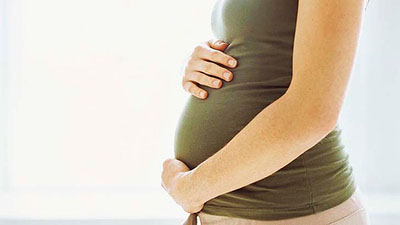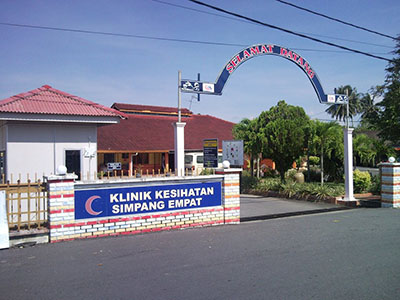
Source: www.smh.com.au
Home birth is not an unusual occurrence for certain areas in our country. It has been practiced by traditional midwives and untrained birth attendants for many decades, since before the existence of modern medical facilities and hospitals. However by improving our health care system for pregnant women, it has managed to reduce catastrophic complications that lead to maternal and perinatal death.
Why then are there still a few women keen for home birth although they have access to local area hospitals? Surprisingly the majority of these women are those with a formal education. This however does not include those who deliver at home due to unbooked or unwanted pregnancies. There could be a few reasons why:
- Feeling of self control and more satisfaction with home birth
- Religious belief that requires only female birth attendants
- To avoid unnecessary intervention such as instrumental delivery or caesarean section
- More natural birth experience, without involvement of drugs or analgesia
In certain countries such as the United Kingdom (UK), home birth is allowed for low risk pregnancies after proper counselling during their antenatal follow up. Home births are one of their norms as the number of the trained midwives is more than enough to take care of pregnant women in certain areas. Good access to communication services, short distances to area hospitals and experienced midwives who have received accreditation from the Midwifery Colleges in the UK make this service applicable to their area.
“Last time, all our grandmothers delivered normally in the village. There was no need to go to a hospital”
That was one of the common statements heard, especially from older members of the population. Well, I would say that is true but bear in mind there was a higher rate of death among mothers and babies during deliveries. Most of them were not reported at the time and hidden from us. Children with disability were born due to unknown brain injuries or lack of oxygen during deliveries.
So, is Malaysia is ready for home birth services? In my opinion, not yet. There are a lot of things that need to be improved before it can be implemented in our country.
- Post partum hemorrhage or massive bleeding after delivery is still the most common cause of maternal death around the world and we are trying to reduce this incidence. Some maternal deaths in rural areas due to this problem are still under reported.
-

Source: www.panoramio.com
The government is building more district hospitals and clinics in rural areas for better access to health care services. For those patients with logistic problems and high risks pregnancies, they are advised to seek medical attention earlier so that early referral can be made out.
- No proper monitoring can be done during home labour. The availability of cardiotocograph, a device for fetal heart monitoring can detect early hypoxic (refer to a condition in which the body or a region of the body is deprived of adequate oxygen supply) insult to the baby during the labour and delivery. Intra uterine death (clinical term for the death of a baby in the uterus, during pregnancy and before birth) and other brain injuries can occur without detection in these home deliveries.
- Home birth is only allowed for low risk pregnant women with fast access to the nearest hospital.
- When the baby cries after birth, it is a sign that your baby can breathe after delivery. There is certain condition the baby would have difficulty of breathing due to meconium or baby passing motion inside the womb during delivery process which stuck inside the baby’s throat or airway system. This kind of cases needs to be attended by pediatrician (a medical practitioner specializing in children and their diseases so that urgent suction can be done to allow breathing. Failure to do so can result respiratory distress to the baby which need machine ventilation.
- The number of trained and licensed midwives is not enough to cover certain populations or areas. There are also not enough female doctors or obstetricians to attend all home births.
- For unintended pregnancies, we advise them to book at the nearest clinic without having to face a judgemental approach by the staff. By providing health care services without bias for single mothers, we can avoid them having unwanted dangerous home births.
- Home birth without any trained birth attendant is definitely one dangerous activity that can be dangerous to both mother and baby. Anything can happen during and after delivery that you can never imagine including collapse and death if the signs and symptoms are not detected earlier.
The hospitals are trying to improve their services such as having husband friendly hospitals and epidural analgesia to make sure the delivery process would be a pleasant experience for our patients. The safety of the patient is our main concern as well trying to respect certain patient’s wishes. Perhaps, one day, Malaysia will be ready home birth services but at present that day has not arrived. All mothers who wish to discuss this issue are encouraged to speak to their local health care providers.
We want the delivery process to be one of the best moment and memorable joy in your life. Don’t let it become a tragedy in your life.
Dr. Mardiana Kipli M.D (UNIMAS) is an Obstetric & Gynaecology registrar currently in Kuching and is in her final year of completing her Masters in Obstetric & Gynaecology.
[This article belongs to The Malaysian Medical Gazette. Any republication (online or offline) without written permission from The Malaysian Medical Gazette is prohibited.]
Reference:
- Royal College of Obstetricians and Gynaecologist/Royal Collage of Midwives Joint statement. Home Birth; 2007
